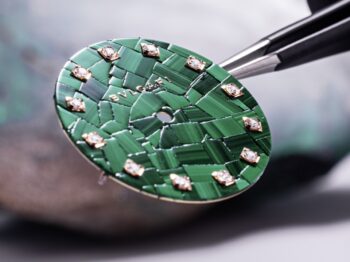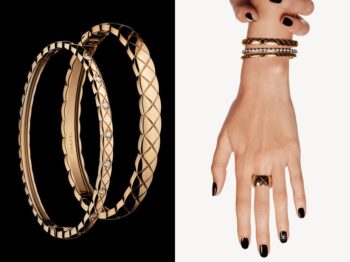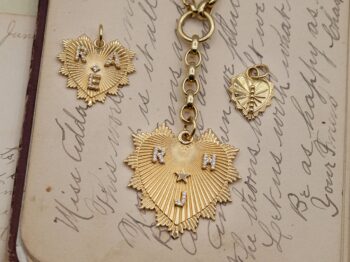Of all the jewelry setting techniques, the invisible or mystery setting stands out from the rest because of its very high level of complexity. Mastering the invisible setting is an art that only a few of the great houses of the Place Vendôme can claim.
The process was invented at the beginning of the 20th century
Alfred Langlois, a manufacturer of precious minaudières, is said to have been inspired by the know-how of micro-mosaics to develop this process. This technique was adopted by Van Cleef & Arpels, which decided to make this setting one of its signatures. Patented by the House in 1933 under the name of mysterious setting, this technique allows precious stones (rubies, sapphires, emeralds or even diamonds) to be set without any claw or visible metal. In doing-so, gem cutter need to carve the under part of the stone to slide it on the metallic rail to be set without claws: a 100% success in precision is required. Later on, Cartier will also patented this technique under the name of “invisible setting”.
The invisible or mysterious setting is kept for high jewelry pieces
Given the level of expertise required to create a piece of jewelry with this type of setting, only the great jewelry houses – and in particular those of the Place Vendôme – have the capacity to offer creations with this type of setting. As Van Cleef & Arpels explains, “The level of expertise required to create a Mysterious Setting piece is such that only a few master jewelers hold the secret. The technique is so complex that it can take up to eight hours to cut each stone.”
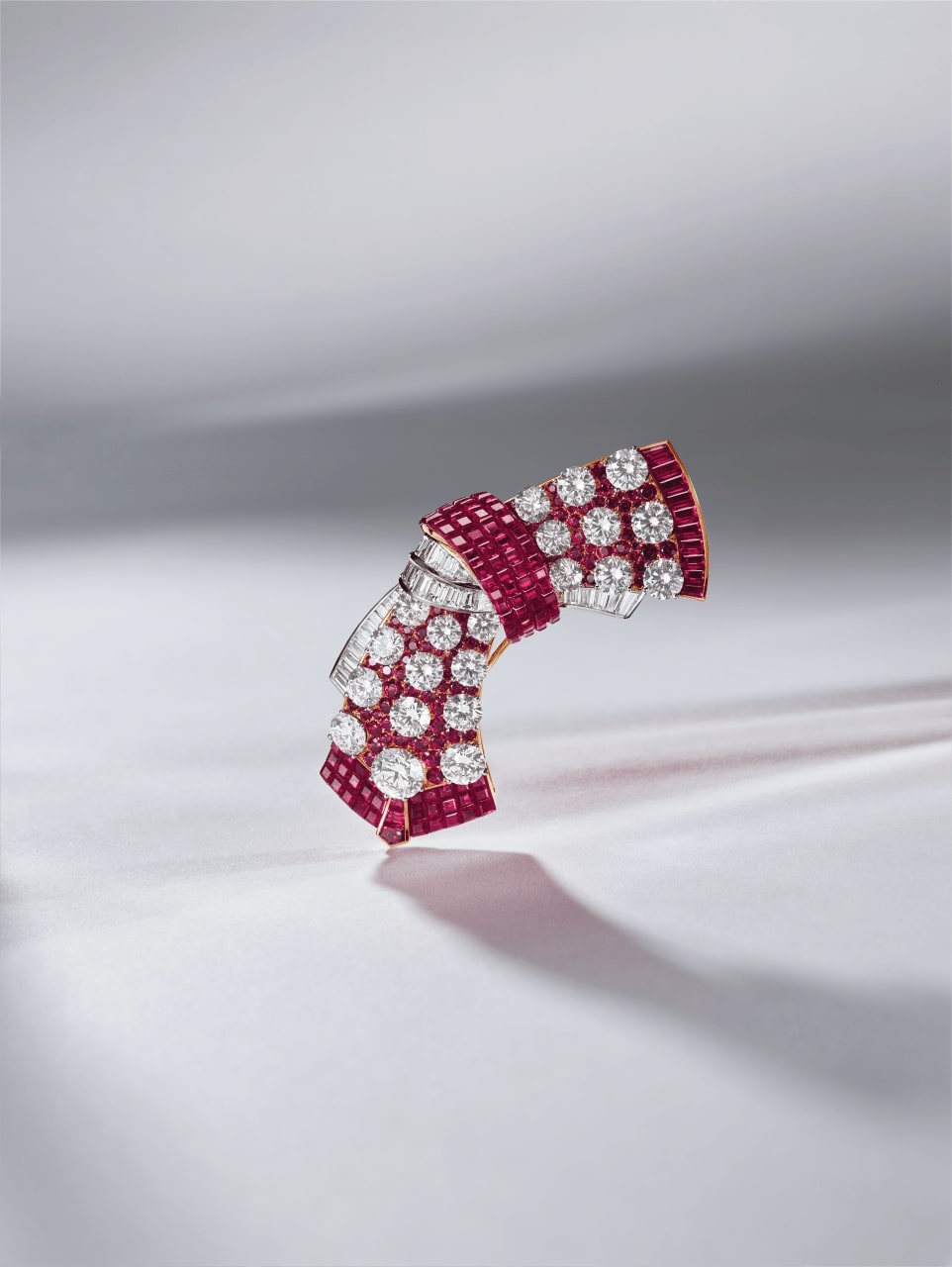
This process uses a rail system to erase the metal on the surface of the jewel
In the traditional invisible setting, the aim is to remove any metallic clinging element from the surface of the jewel, in order to boost the brilliance of the stones. To do this, the lapidary must cut the stones one by one, by hand and insert them into a T-shaped track using grooves cut into the gem’s head. The challenge is to place the stones next to each other without creating any gaps.
Van Cleef & Arpels has invented two other variations on the traditional setting
In addition to the traditional Mysterious Setting, there are two other technics: the Mysterious Shuttle Setting and the Mysterious Stained Glass Setting. The first consists of cutting the stones in the shape of polished navettes, to accentuate the effects of relief. As the House explains, “It was in 2018 that Van Cleef & Arpels adapted its Mysterious Navette setting technique to emeralds and diamonds for the first time, with the Pine Cone clip, an exceptional one-off piece. As for the Mysterious Stained Glass Setting, it goes further by making the setting disappear on both sides of the piece “to highlight the translucence of the stones”.
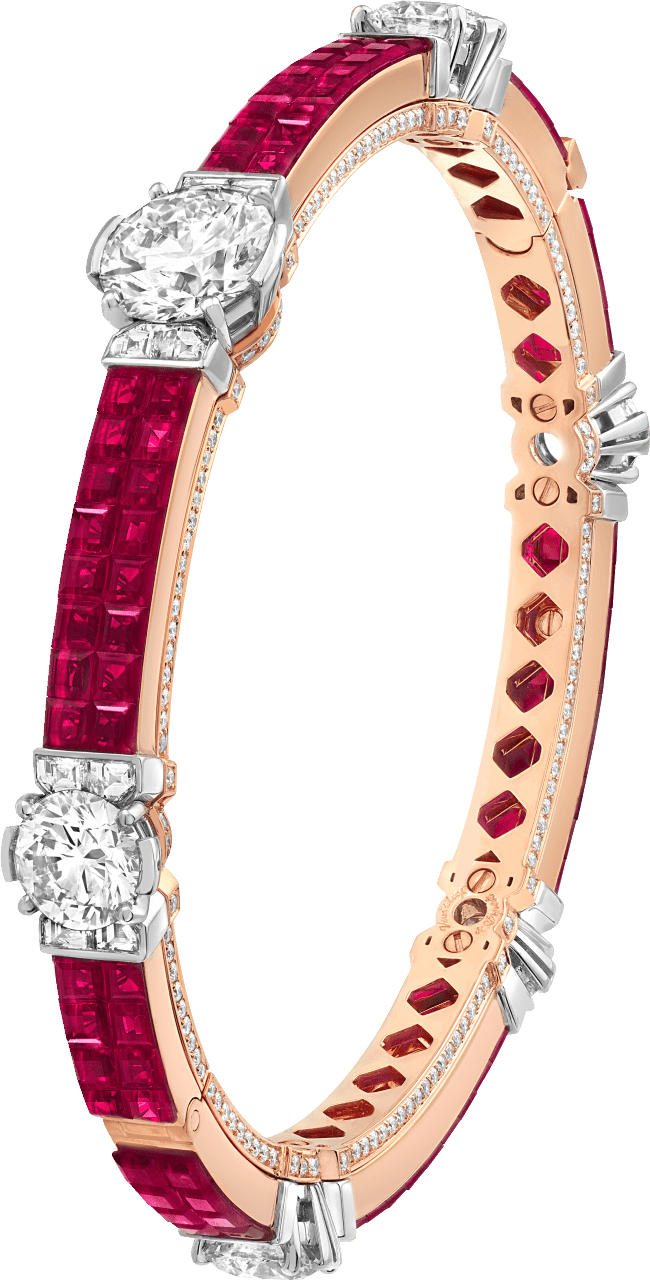
The invisible setting magnifies the brilliance of the stones by accentuating their reflections
The reason this setting technique is so popular is that it is unique in transforming a piece of jewelry into a true work of art. By concealing the aesthetic constraints of a metal structure, the invisible or mysterious setting allows the jewel’s shapes to be adapted, and at the same time accentuates the reflections and the contrast effects. Thus positioned side by side, the gems exalt the light as never before and magnify graphic creations or those inspired by naturalist themes. A setting that illustrates like no other the know-how of the great houses.


